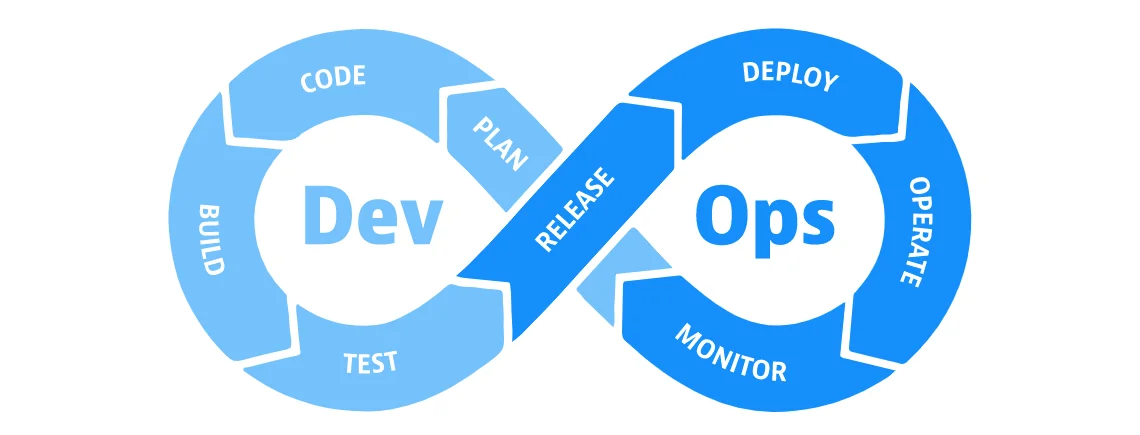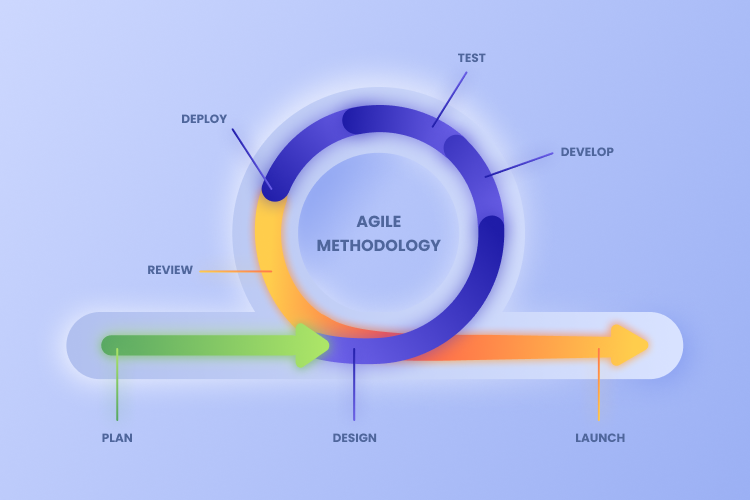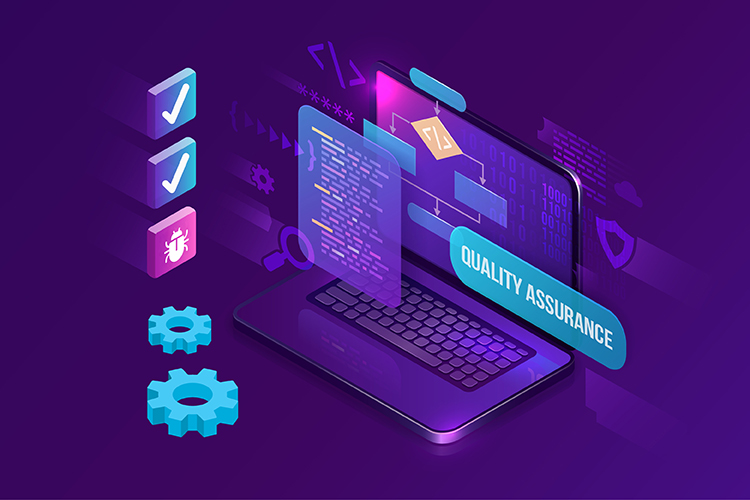Testing in DevOps – Everything You Need to Know
- QA
- December 20, 2021
Organizations have widely accepted DevOps services to refine the quality and promptness of software delivery. DevOps helps the development and operations team to work effectively. It helps teams plan better, communicate and process projects successfully.
Automated testing played a key role in standardizing and speeding DevOps processes. Here we will talk about DevOps, testing in DevOps, benefits and best practices of DevOps testing strategies.
What is DevOps?
While Agile and DevOps are two different processes, one can find familiarity between the two as those who are working on Agile will likely adopt DevOps effortlessly.

The term DevOps stands for development and operations, and works on continuous development. i.e the software being built, deployed, tested, verified and delivered on the ready to use production environment.
DevOps is an exercise focusing on modernizing the areas ensuring its progress. The conceptualization is to accelerate the delivery of working software and eliminate the bottlenecks.
How has Testing Worked Traditionally?
Testing is not new in the software business. However, testing in a traditional environment is not the same as testing in a DevOps environment.
Traditionally, in the waterfall model, software testing was performed as per the following phases:
- Requirements
- Analysis
- Design
- Implementation
- Testing
- Deployment
- Maintenance
Here, software tester do the testing work apart from the development team so it becomes difficult and expensive to fix any bugs discovered during the testing stage. Hence, it’s uncertain whether the required quality and standard of the development could be conserved within the allocated time frame.
Why is QA Essential to DevOps?
DevOps is a collaborative approach and integration of QA in the development and testing cycle plays an essential role. In DevOps, quality is ensured throughout the project cycle and highly motivates continuous testing.
In the traditional testing approach, the quality team was the last to enter the project to verify the application and it had no role in the initial phases of application development.
The pattern is changed through DevOps, now, the latest development code is pushed to production by the QA and testing team with ease, while the deployment is ensured by the DevOps.
As a result, quality assurance is no longer limited to logging bugs but is now involved in ensuring the smooth release of applications. The role of QA is changed with DevOps:
- QA permits and directs to check the quality and performance of the application in a faster and secure way before the delivery. Automation guarantees faster delivery.
- Providing functional build to clients at any stage of the development life cycle would be next to impossible if quality is not assured at every stage.
- The need of the organization is to build the right DevOps testing strategy to deliver successful software solutions and operations.
How to Create a DevOps Workflow?
One size does not suit all solutions due to the stretch in requirements and objectives of the teams. Thus, it becomes important to construct a DevOps workflow for the team.
Below are two general scenarios to integrate DevOps workflow:
- Scenario one: To develop a workflow for Greenfield software development. As the development team would be starting fresh, It would be easy to automate the testing operations and processes with growing application and team size.
- Scenario two: To develop a workflow for Brownfield software development. As there would be an existing codebase and team, DevOps need to be adapted for maintenance. This would take some extra effort to rebuild the workflow in comparison to Greenfield software development. The possible efforts are to contemplate the tasks through the Kanban board.
Picturing the tasks with a Kanban board helps us to identify and address these issues to accelerate the workflow. Detailing segregated tasks on boards allows the team to work together, resulting in developing the functional test strategies. For the most part, this revamps collaboration between DevOps and TestOps.
Benefits of DevOps Testing Strategy
DevOps testing works on a continuous testing approach. Here are the benefits you can expect from a robust DevOps testing strategy.
1. Covers functional and non functional testing
The functional testing types involved with DevOps are Unit testing, Integration testing, Regression testing, API testing and Cross browser testing.
Likewise, the non functional testing types such as usability, security, reliability, scalability testing are involved in DevOps.
2. Continuous analysis of risk areas
Testing the build in each and every version clears out the risks that can hamper the delivery of builds on time. The evaluation of build in a continuous manner would help to eliminate risks at every single stage.
3. Better user experience
Routine feedback from customers helps developers to understand and fix problems and make continuous updates to the application. It gives an ability to create test cases as per functional point of view, which are executed as per requirement to evaluate the end user’s experience. DevOps testing aid to keep the software sturdy and stable.
4. Platforms coverage
As DevOps make use of test automation, it ensures the platform coverage by integrating and using the right test automation tools. This approach helps to deliver at a good speed.
5. Fast feedback and delivery
The need of the hour is to get the feedback within a day in order to make the fixes at the same time. Traditionally, developers need to go back to code after weeks of building it due to late feedback. DevOps leads to faster feedback and faster delivery.
6. Stable and quality software
Organizations have adopted DevOps with open hands. The interesting part about DevOps is that each team member plays an important and equal role. The DevOps team has a common goal of delivering secure, stable and quality software.
Best Practices for Testing in DevOps
Choosing a bedrock for test automation is challenging for organizations. A comprehensive evaluation of the software is vital to create a DevOps testing strategy. Below are some of the key points to help shape a successful test strategy.
1. End to end tests
It is very important to test the functional areas and therefore we need to write end to end tests. End to end tests cover the real time scenarios of each module and not just depend upon the unit tests. The tests include a set of test cases for the vast coverage which boosts trust and confidence for the project delivery.
2. Test automation and testing types
In DevOps, the constant integration of code is kept to a central repository, which means the application is always ready for continuous testing. Testing the application at several stages can help in delivering better products.
As the code is frequently updated, the best exercise is to include unit, functional, integration and regression testing in place. Including different testing types eliminates the risk of errors and failures and improves performance of applications.
3. Kanban boards makes it simple
The Kanban boards are part of agile methodology which has a major focus on the smooth project delivery. With the key features such as a clear picture of the project status, issues and updates helps the team to communicate and collaborate better. The board gives a sharp view of the bottlenecks in the pipeline and enhances the process roadmap.
4. Testing tools
Testing tools makes the tester’s work easier if the tester has adequate expertise and skills to analyse and use the tool. The budget factor also plays a role when talking about the testing tools in automation. Some of the DevOps testing tools are designated as:
- Monitoring Tools
- Version Control Tools
- Security Testing Tools
- Performance Testing Tools
- Continuous Delivery Tools
DevOps Testing Tools
Various DevOps tools are available in the market. These tools help in saving time by automating the process for development integration and delivery.
Some of the familiar tools include:
- Docker: It is an open-source DevOps technology suite that works on the concept of containerization enabling development teams to code, deploy and test applications regardless of the project environment.
- Jenkins: An open-source tool that helps create, test & deploy the software. It also permits developers to find and fix bugs in their codebase.
- GitHub: Another widely used tool holding up effortless collaboration. Version restoration is a key feature of GitHub in case of any error found in the latest version.
- Selenium: It is one of the browser automation tools plotted to carry through Web UI testing largely used in DevOps pipelines.
- JMeter: It is a highly adaptable open-source load testing tool used to test and assess performance of the website.
Conclusion
The behavior of applications is switching day by day and getting resilient. For many businesses, DevOps is the right solution for increasing or maintaining market competitiveness. DevOps can increase the development speed, but a vigorous QA strategy can lead to successful delivery of the project.













